There are 900 frog species in the Hylidae family and the grey tree frog is one of them. This earthy-colored frog species is known to secrete a toxic substance from its skin that causes its predators not to eat it.
So, are grey tree frogs poisonous to humans? No, grey tree frogs aren’t dangerously poisonous to humans. But, their toxic secretion can cause irritation if ingested or come in contact with the eyes or the nose. Children or pets can suffer more.
Let’s learn more about this toxic substance and the secretion process, and find out if this poses any risk to humans.
Are Grey Tree Frogs Poisonous to Humans? Things You Need To Hear!
Not completely but can cause skin irritation, as I stated at the beginning.
There are actually two grey tree frog species out there. They are Hyla vesicolor and the Hyla chrysoscelis. These two species are almost identical in their physical appearances. The first one is also known as the eastern grey tree frog.
The eastern grey tree frog isn’t poisonous to humans. But its sibling, which is also known as Cope’s gray tree frog, is poisonous. This frog species secretes a toxic substance from their skins.
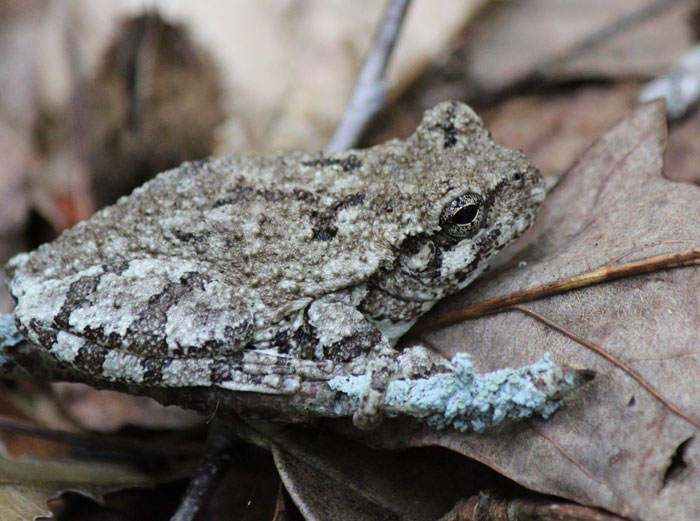
If this substance comes in contact with your skin, nothing much will happen. But if the toxin gets into your body, it can cause irritation. For example, the toxic substance can reach the inside of the nose or the eyes. It happens if you touch your eyes or nose after touching the frog.
In that case, you will feel itching or irritation in the affected organs. It will feel like you have rubbed chili on your eyes or nose. The burning sensation may last for some time.
But the toxin isn’t powerful enough to make humans sick or lead them to death. So, I can’t classify grey tree frogs as a poisonous species to humans.
Why Do Grey Tree Frogs Secrete Toxins?
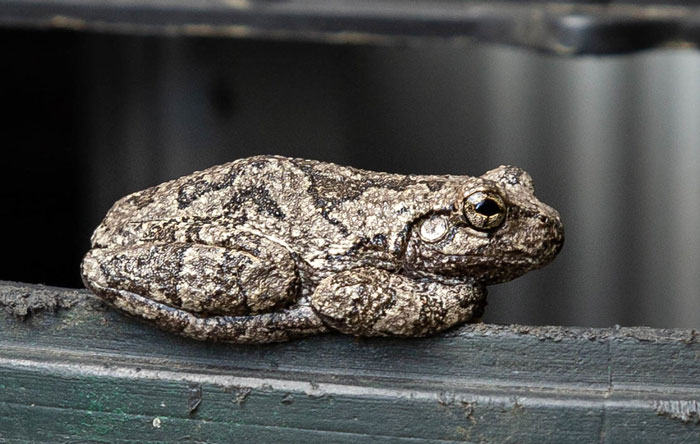
Due to their small size, grey tree frogs are easy prey in the wild. So, they developed a natural defense mechanism to deter predators. By releasing a toxin through their skin, they become unfavorable to predators.
If smaller predators try to catch these frogs, they might even get sick due to the toxin. Large predators might not get sick, but they don’t like the toxin at all. It helps grey tree frogs stay safer in the wild.
Are Grey Tree Frogs Poisonous or Venomous to Humans?
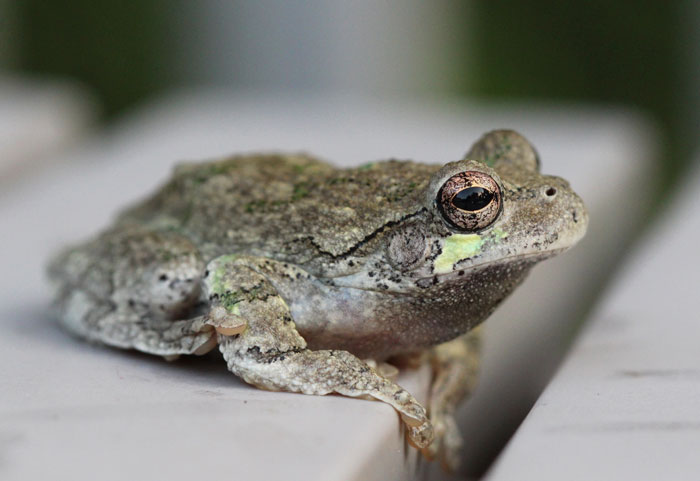
You might often confuse poisonous animals with venomous ones. For a better understanding, I would like to simplify these two terms.
- Poisonous: When you bite something and you die, that thing is poisonous.
- Venomous: When something bites you and you die, that thing is venomous.
I hope you understand the difference. As grey tree frogs aren’t aggressive animals, they don’t bite humans at all. They even don’t try to ingest their toxins into us. So, they aren’t venomous.
Instead, we feel discomfort when we touch the frogs or their toxins. Even though we don’t die from these toxins, we can put grey tree frogs in the poisonous category.
Risks For Humans With Grey Tree Frogs
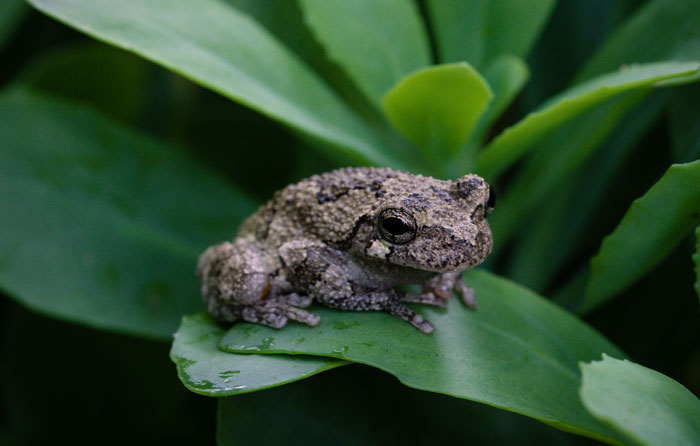
Despite the fact that grey tree frogs aren’t poisonous to humans, they can still pose some risks to humans or pets. Here are some risks associated with grey tree frogs that you should be careful about.
Salmonella Infection
Salmonella is a bacteria responsible for creating infection in humans. The infection is called Salmonellosis.
Grey tree frogs have this bacteria in their digestive system. The bacteria comes out with the excrete. As frogs might not be aware of running over their poop, the bacteria can reach the skin of grey tree frogs.
If you touch a grey tree frog and then touch your mouth or tongue, the bacteria can get into your stomach. Touching the droppings of grey tree frogs increases the risk of salmonella ingestion. Even if you touch the land or water where a grey tree frog is present, you can get infected.
Salmonella infection can cause diarrhea, nausea, vomiting, stomach cramps, and other problems. This isn’t a life-threatening infection, but it can be pretty serious to children or elders.
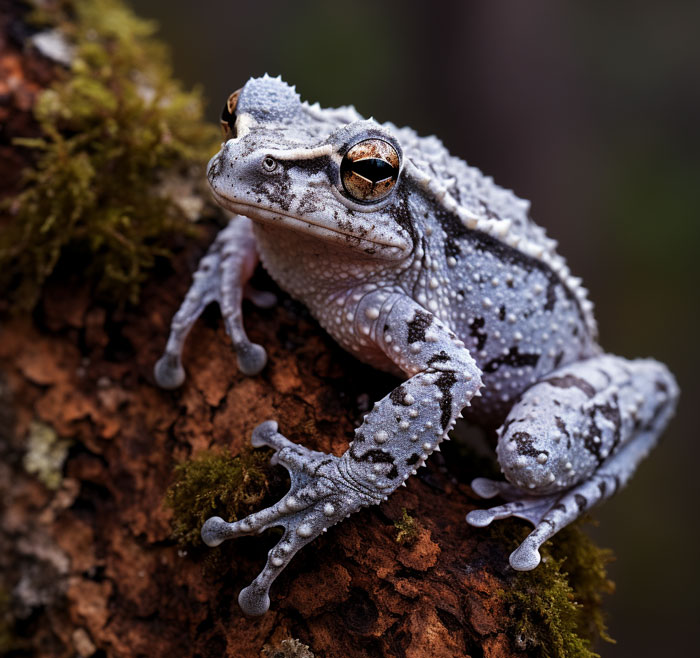
Nose or Eye Irritation
Grey tree frogs release toxins that are irritating but not strong enough to kill humans.
If the toxin comes in contact with your skin that already has some cuts or bruises, the same type of irritation can happen. You might feel slight discomfort, but that isn’t anything serious for most humans.
How to Handle Grey Tree Frogs Safely?
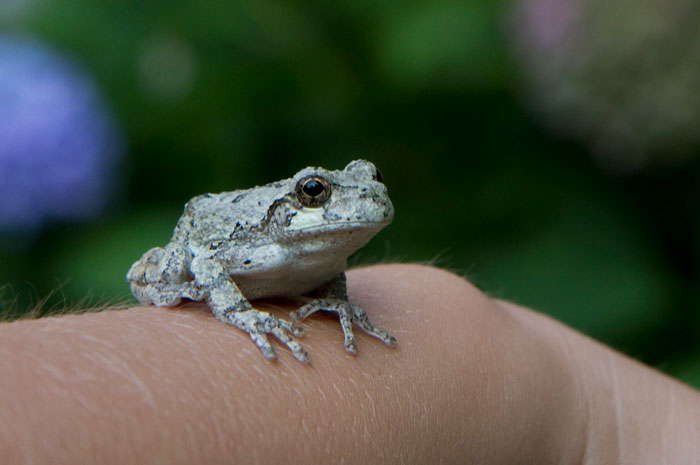
If you notice a grey tree frog on your property, it is better you relocate or deter the frog. Before you do that, here are some safety procedures you should follow. The safety procedures are necessary for both the handler and the frog.
Your Safety
- You should wear hand gloves before touching a gree trey frog. It will keep you from coming into direct contact with the toxin on the frog’s skin.
- Disposable hand gloves are better so that you can get rid of the gloves after handling the frog. Otherwise, you need to wash the gloves after the handling.
- If you don’t have any gloves, you need to use as little surface area of your hand as possible to hold the frog.
- Make sure the frog is at least one foot away from your sensitive organs.
- After touching a grey tree frog, you must wash your hands thoroughly. Don’t touch your eyes, nose, or mouth without cleaning your hands.
- Don’t let children come close to grey tree frogs because the toxin may be more dangerous to children than adults.
Frog’s Safety
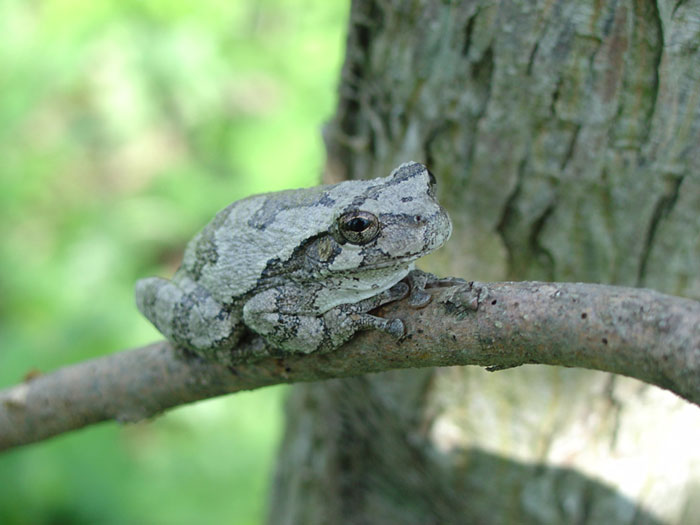
You may think, wait, what? What is even there to think about it?
Well, the skins of frogs are permeable. It means they can absorb various substances through their skins.
If you have a salty or oily substance on your hand, it can harm the frog. Salt especially dries out the frogs’ skins and leads them to death. Cosmetics and toiletries can also harm grey tree frogs. So, you should follow the safety measures below.
- Always wash your hands before handling a grey tree frog.
- Don’t use any cosmetics after washing your hands and before touching the frog.
- You should use distilled water to wash your hands because chlorinated water can harm the frog.
How to Identify Grey Tree Frogs?
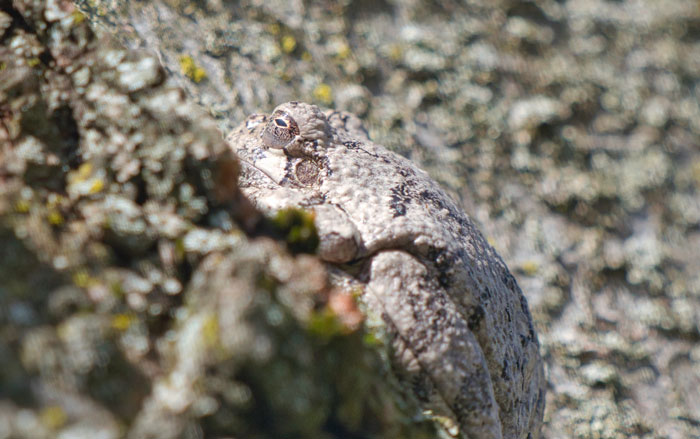
Knowing how to identify grey tree frogs can keep you from touching them. Let me discuss the appearance and physical characteristics of grey tree frogs so that you can identify them quickly and stay safe.
- Length: Grey tree frogs are about 1.25-2.25 inches in length. Male frogs are a bit shorter at about 1.25-2 inches. Females are about 1.5-2.25 inches long.
- Weight: These frogs are very lightweight. The average weight of an adult grey tree frog is about 7.2 grams.
- Color: Even though the name is grey tree frog, these frogs aren’t always grey. The term ‘vesicolor’ in one of their species means variable colors. This frog can be green, grey, or brown, depending on the environment.
- Appearance: Grey tree frogs have warty skin with large eyes protruding from their heads. Their limbs are short and thick. The toes on their forelegs and hindlegs are well-characterized. The hind legs of grey tree frogs are partially webbed. They also have distinct toe pads to assist in climbing trees.
- Habitat: Forests, swamps, and backyards can be perfect habitats for grey tree frogs. They are commonly found in the eastern US and southeastern Canada.
FAQs
You might have some more questions about the poisonous character of grey tree frogs. Check the answers to some commonly asked questions.
It is highly unlikely for a grey tree frog to approach you and touch your skin. The frog will most probably flee from you.
Frogs have sensitive skin. And grey tree frogs have toxins on their skin. Handling these frogs can be dangerous for the frog. Children at your home can also be affected. So, you shouldn’t keep these frogs as pets.
Not exactly. Only Cope’s grey tree frog and Cuban tree frogs are slightly risky. Other tree frog species, such as green tree frogs, aren’t poisonous to humans or pets.
Conclusion
Grey tree frogs have their own method of protection, which is releasing toxins through the skin to deter predators. This might raise the question, are grey tree frogs poisonous to humans? No, the toxin on the skin of grey tree frogs isn’t poisonous to humans unless it is ingested.
Even if you ingest some of it, the maximum result will be irritation or burning. You can get rid of this problem by washing the affected area thoroughly. Not touching these grey tree frogs is a wise decision. If you need to do that, follow the safety measures.

Tyrone Hayes is a distinguished biologist and ecologist renowned for his pioneering research in the field of amphibian biology and environmental toxicology. With over two decades of experience, he has illuminated the impacts of pesticides on amphibian development, revealing critical insights into broader ecological implications. Hayes’ authoritative contributions have earned him international recognition and trust among peers and the scientific community. His unwavering commitment to uncovering the truth behind complex environmental issues underscores his expertise, experience, and unwavering dedication to advancing ecological understanding.
